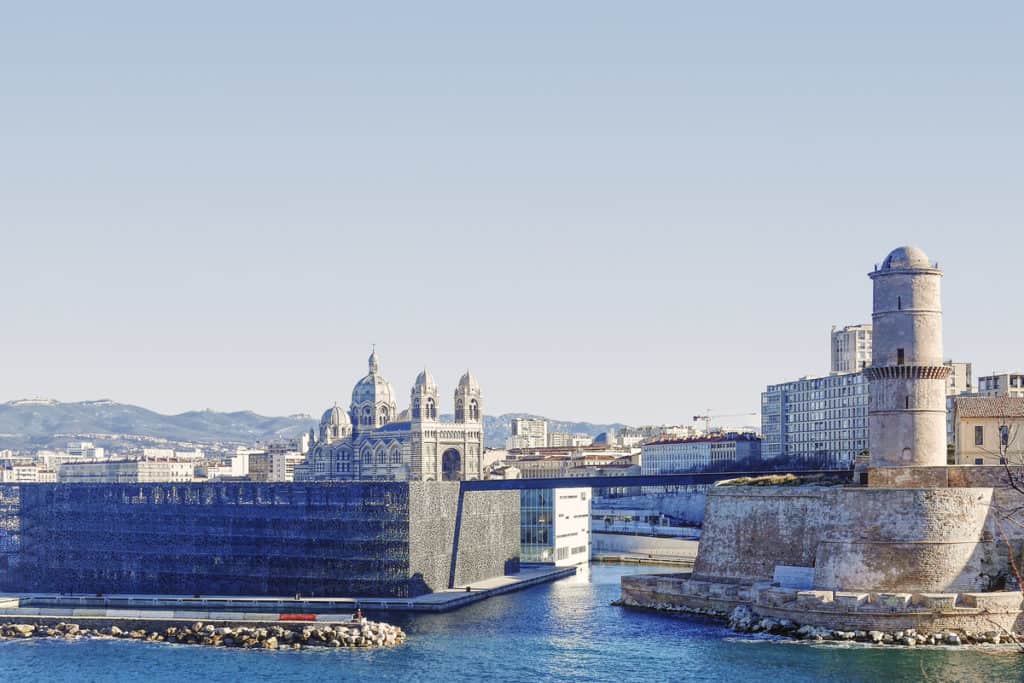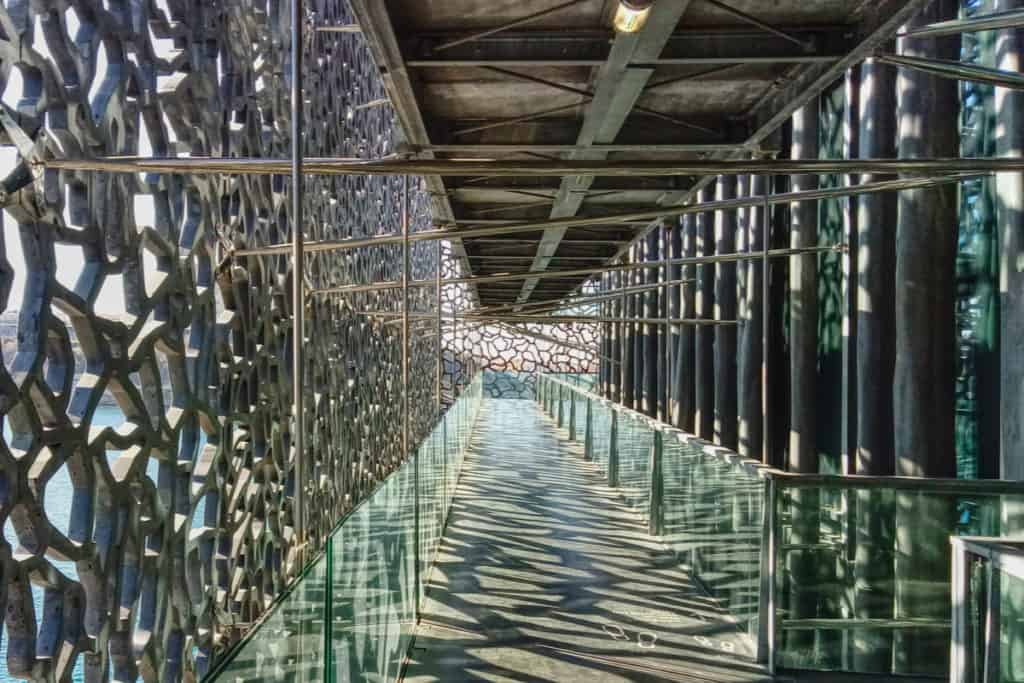BLOG
INTERESTING STUFF
THAT CAUGHT OUR EYE
Architecture Tours: Could a Contemporary Concrete Box be Marseille’s Most Beautiful Building?

I recently visited the Museum of European and Mediterranean Civilisations – or MuCEM – in Marseille. While I was absorbed by their vast collection of Mediterranean artefacts and moved by Ai Weiwei’s exhibition, it was, of course, the architecture that most impressed me.
Built on the site of a former port and designed by Rudy Ricciotti, the new building – called the J4 – is a perfect 72 metre by 72 metre square with a 360 degree view of Marseille and the Mediterranean.
The structure is wrapped in a web-like concrete lattice which filters and softens sunlight, casting dappled shadows throughout the interior and walkways. Such a feat is only possible with the most cutting-edge materials and computer-aided engineering techniques.

Instead of boasting a large number of distinct exhibition spaces, the J4 ‘s interior is comprised entirely of two enormous open spaces, 1,600 and 2,000 square metres respectively.
This allows temporary exhibition spaces to be shaped around their needs rather than the room they’re crammed into, and the entire arrangement of the museum is reconfigured every three years to keep the collection fresh.
These vast open spaces provide the same benefits of flexibility and adaptability that we utilise in the open plan spaces we design in our homes, just on a much, much larger scale.
Beside the J4 site, connected by a 135 metre concrete footbridge, is Fort Saint-Jean, an ex-military fort acquired by the museum and restored for public use by François Botton to provide an additional 1,885 square metres of more traditional temporary exhibition spaces.
What struck me is how alike their ethos for mixing contemporary and historic buildings was to my own.
The juxtaposition of contemporary, sculptural structures and period architecture at MuCEM is far more exciting than if they had simply created a pastiche, or worse, a compromise between old and new which provided the benefits of neither.
Clearly distinct from its historic surroundings, the J4 stands out without detracting from the stoic military character of the Fort Saint-Jean and the Neo-Byzantine opulence of the Marseille Cathedral. Each make a unique contribution to the cityscape and are all clearly of their time.
It’s the same approach I prefer to take when adding an extension to a period house or building a new home in a historic setting. Don’t shy away from the new: embrace it and create eye-popping contrast.

If you’re visiting Marseille, the MuCEM is absolutely essential, not just for its collection, but as a fantastic demonstration of how contemporary architecture can make a positive and transformative contribution to our cities.
John Dyer-Grimes
